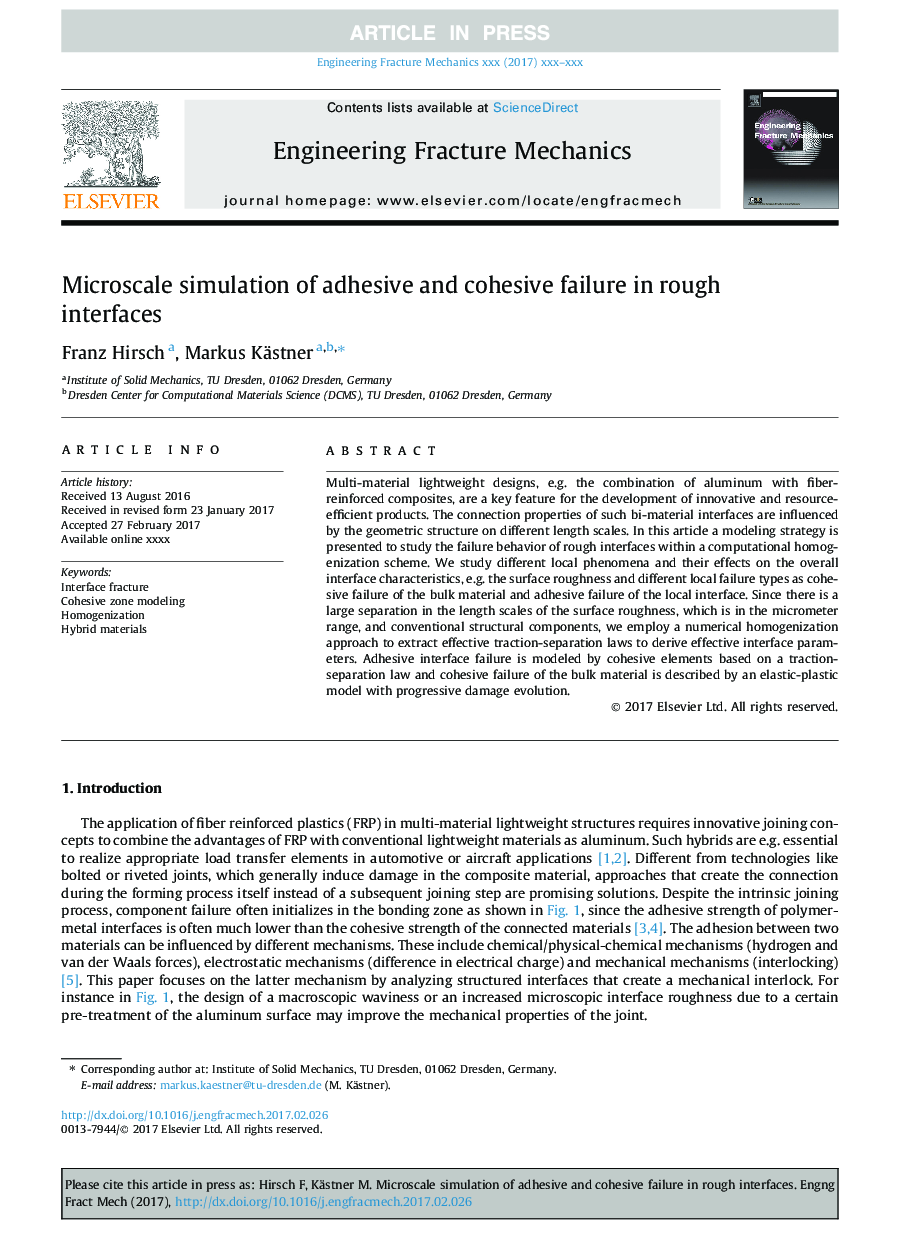| Article ID | Journal | Published Year | Pages | File Type |
|---|---|---|---|---|
| 5014042 | Engineering Fracture Mechanics | 2017 | 17 Pages |
Abstract
Multi-material lightweight designs, e.g. the combination of aluminum with fiber-reinforced composites, are a key feature for the development of innovative and resource-efficient products. The connection properties of such bi-material interfaces are influenced by the geometric structure on different length scales. In this article a modeling strategy is presented to study the failure behavior of rough interfaces within a computational homogenization scheme. We study different local phenomena and their effects on the overall interface characteristics, e.g. the surface roughness and different local failure types as cohesive failure of the bulk material and adhesive failure of the local interface. Since there is a large separation in the length scales of the surface roughness, which is in the micrometer range, and conventional structural components, we employ a numerical homogenization approach to extract effective traction-separation laws to derive effective interface parameters. Adhesive interface failure is modeled by cohesive elements based on a traction-separation law and cohesive failure of the bulk material is described by an elastic-plastic model with progressive damage evolution.
Related Topics
Physical Sciences and Engineering
Engineering
Mechanical Engineering
Authors
Franz Hirsch, Markus Kästner,
